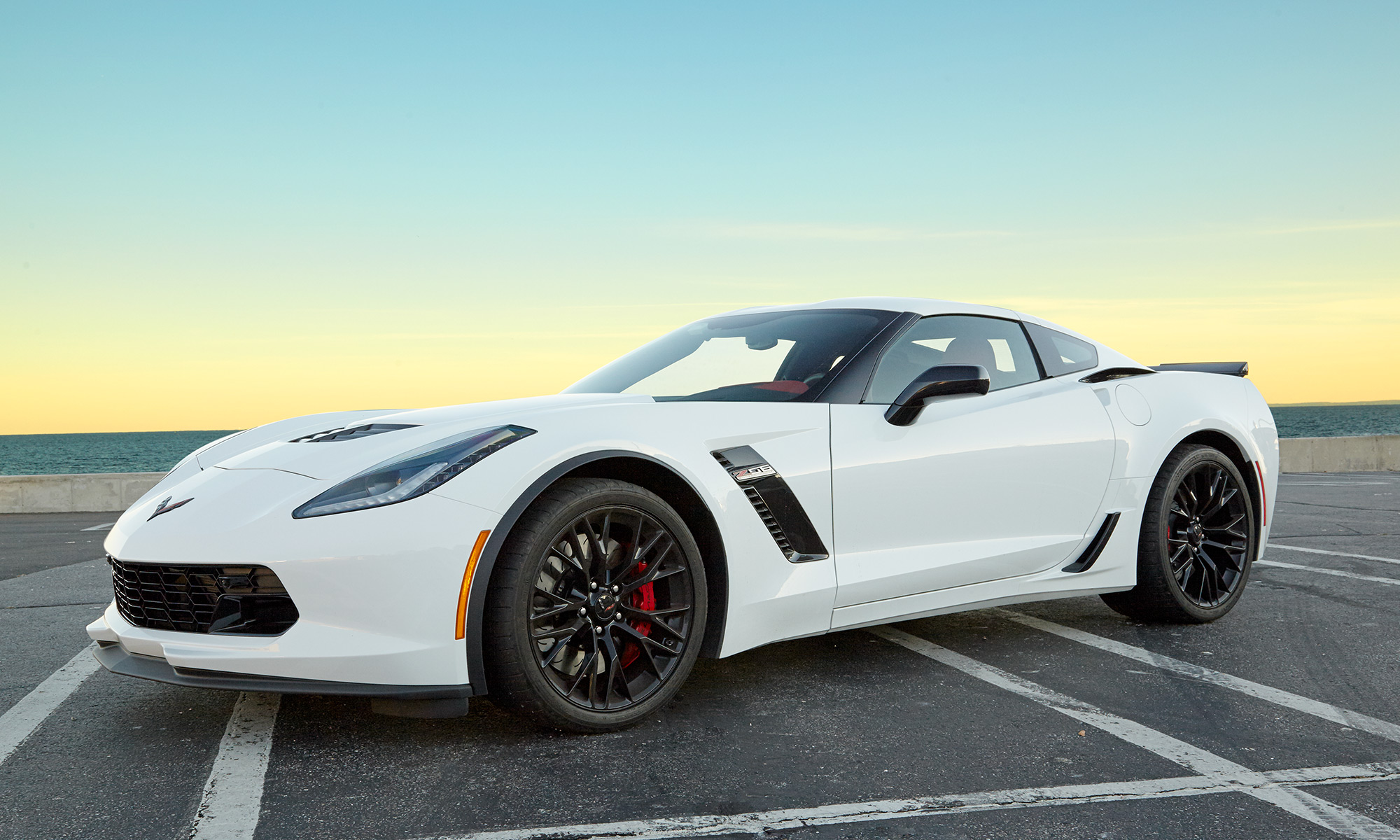Tom's Guide Verdict
A supercar version of the Corvette, the Z06 is still just a quarter of the price of comparable foreign exotics.
Pros
- +
Supercar performance, excellent handling
- +
Thrill-ride, whiplash acceleration
- +
Leading tech features, including CarPlay support
- +
Built-in GoPro-style camera
- +
Loud, loud, loud
Cons
- -
Loud, loud, loud
- -
Lack of advanced driver assistance systems, such as lane keeping and emergency braking
Why you can trust Tom's Guide
An American head turner that is thrilling to drive, the Z06 version of the 2016 Corvette delivers the performance of a supercar for the price of a luxury sedan. It also comes with plenty of high-tech features, ranging from excellent smartphone integration to an onboard video recorder.

Starting at around $80,000, the Z06 is a souped-up, 6.2-liter, supercharged V8 version of the two-seater, churning out 650 horsepower and enough raw power to make drivers giddy with delight. My test model included Chevy's in-dash navigation and connected car system, which is compatible with Apple CarPlay. (Android Auto is reportedly coming.) The total price with options was still only $87,140. For comparison, a 2016 Porsche 911 Turbo S is over $200,000, a Ferrari 458 starts at around $250,000, and when Ford's new GT supercar appears later this year, it will reportedly cost more than $400,000.

For some, the boisterous Z06, with its seven-speed manual gearbox and ridiculous amount of horsepower, will seem like overkill. Can you get squirrely in the Z06 and embarrass yourself? Absolutely. But treat it gently, and the rewards will be limitless.
Built-in GoPro-style camera
The technology the Corvette is best known for is its industry-first Performance Data and Video Recorder (PDR). Essentially, it's a forward-facing GoPro-style 720p video camera that's built into the windscreen above the rear-view mirror, but it can record a lot more than just a leisurely country drive.
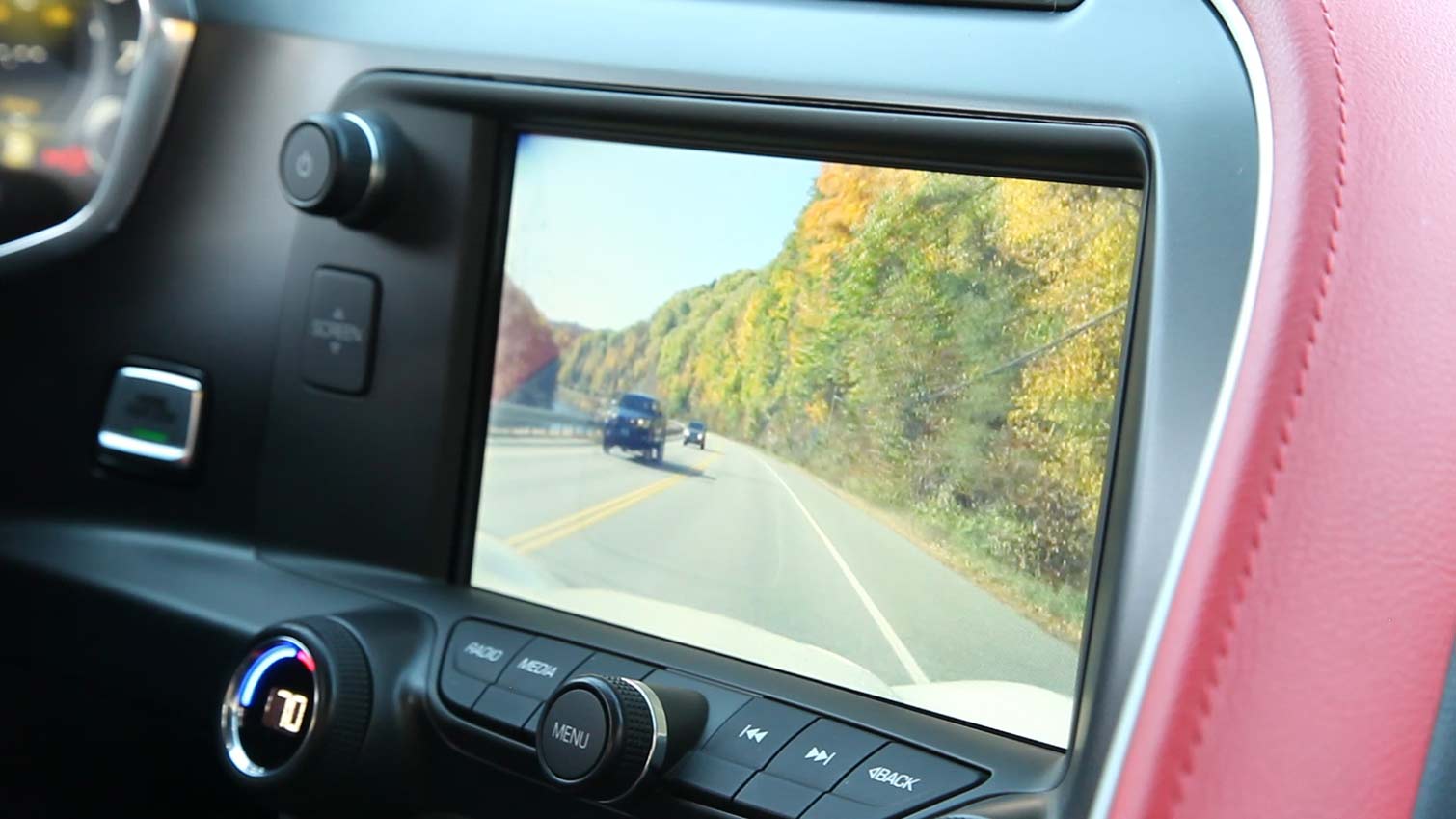
The Corvette's PDR has the added smarts to also record driver performance, and even track times. To store recordings, you put your own SD card into a slot in the glove compartment, and Chevy says the video is isolated there; no video is stored on the car's black box or uploaded to the cloud. You can choose from three different recording themes — sport, track or performance timing — to record RPM, gear changes, speed and lateral G forces.
The 'valet' mode can capture any Ferris Bueller transgressions by parking lot attendants.
You can play back the video in the dash later, and if you think better of sharing any embarrassing or potential criminal moments, you can delete it right there. The system also includes a surveillance or "valet" mode. Punch in a code, and you lock out the infotainment/navigation system (so a valet person can't steal your personal information, such as contacts and home address). Better yet, it can capture any Ferris Bueller transgressions by parking-lot attendants.
MORE: Connected Cars: A Guide to New Vehicle Technology
Get instant access to breaking news, the hottest reviews, great deals and helpful tips.
The valet mode also includes an option to have the Corvette secretly record video — but no audio — whenever the car is turned on. The video recording lacks audio because the previous version of the PDR elicited some legal questions about audio surveillance. Although the legal scholars I surveyed concluded that there was no real legal risk to GM, the company decided to take a cautious approach and prevent customers from possibly breaking eavesdropping laws in states that require two-party consent.
MyLink Meets Apple CarPlay
The Z06 I tested also comes with Chevy's MyLink connected car infotainment system. The 8-inch MyLink touch screen is a little balky, but if it were too sensitive, you'd get a lot of misread finger touches. The interface offers handy swipe gestures to flip through screens, and it's all laid out logically, with a physical menu dial, as well as hard Home, Radio and Back buttons. Also welcome is a volume control that's well positioned to the left of the screen, making it within easy reach.
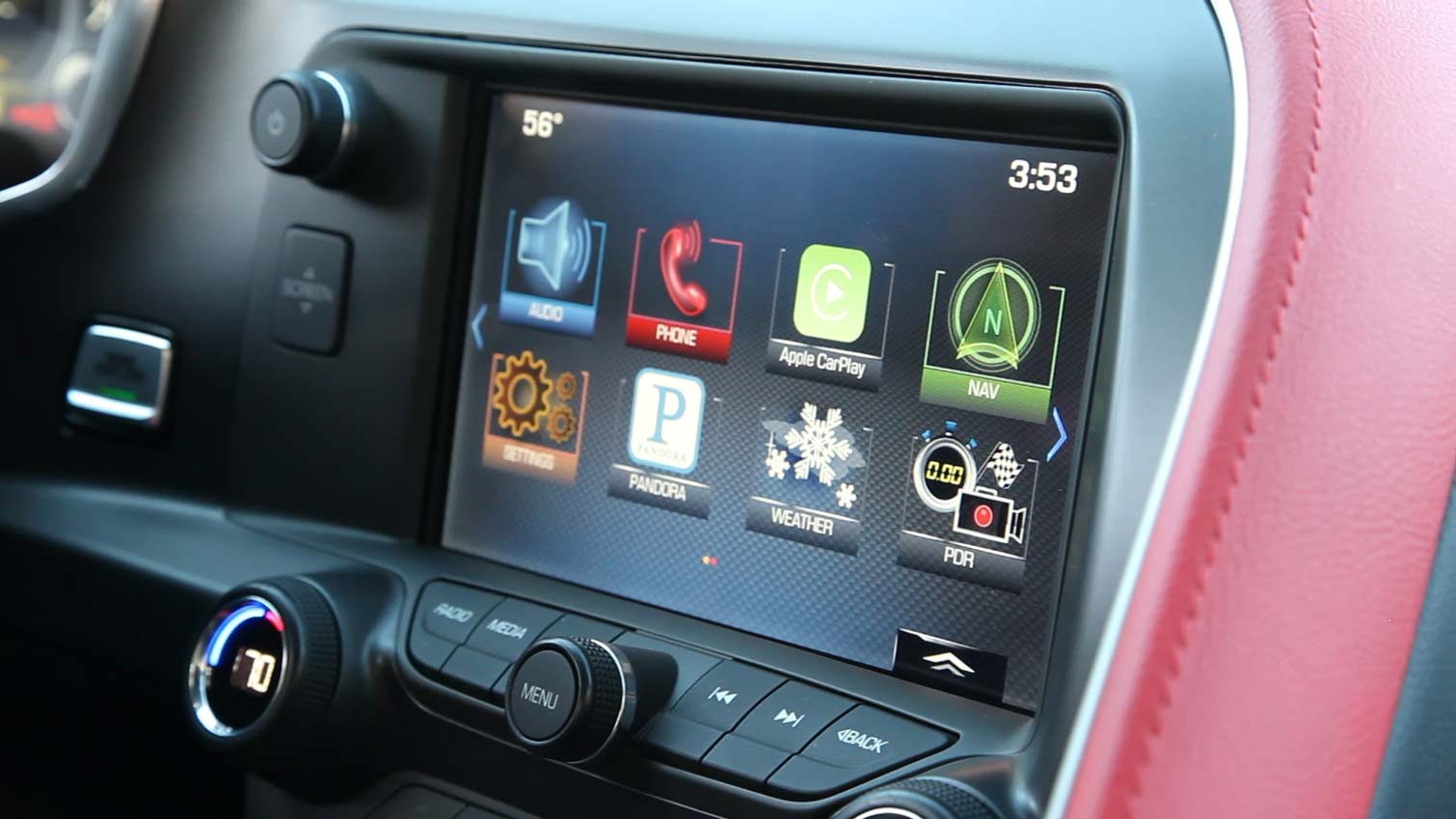
The GM sports car also has the requisite blue OnStar button to invoke the concierge service: "Hello? I'm driving too fast to bother with the navigation system. Could you tell me how to get to the nearest Starbucks?" OnStar also includes location tracking and emergency slowdown and stop in the event of a theft — features you can't get simply by plugging a smartphone into the dash.
Also included is support for iPhone owners (iPhone 5 and later) via Apple's CarPlay. It delivers the same experience and features as you'll find in other vehicles. You can play Apple Music from a connected phone, make and receive calls, and even use your phone's navigation software. The implementation is virtually identical to that of other automobile support systems. And that's the point: to offer a consistent interface.
MORE: Apple CarPlay vs. Android Auto: Connected Car Face-Off
That means it also has some of the same weaknesses. In general, CarPlay is slower than comparable built-in features, such as the navigation system in the car. And although Siri can be used within CarPlay, Apple's virtual assistant is a little tardy at times, and cannot be used to do anything else in the Corvette, such as turn on the radio or the heat. (The same limitations apply to all implementations of CarPlay.)
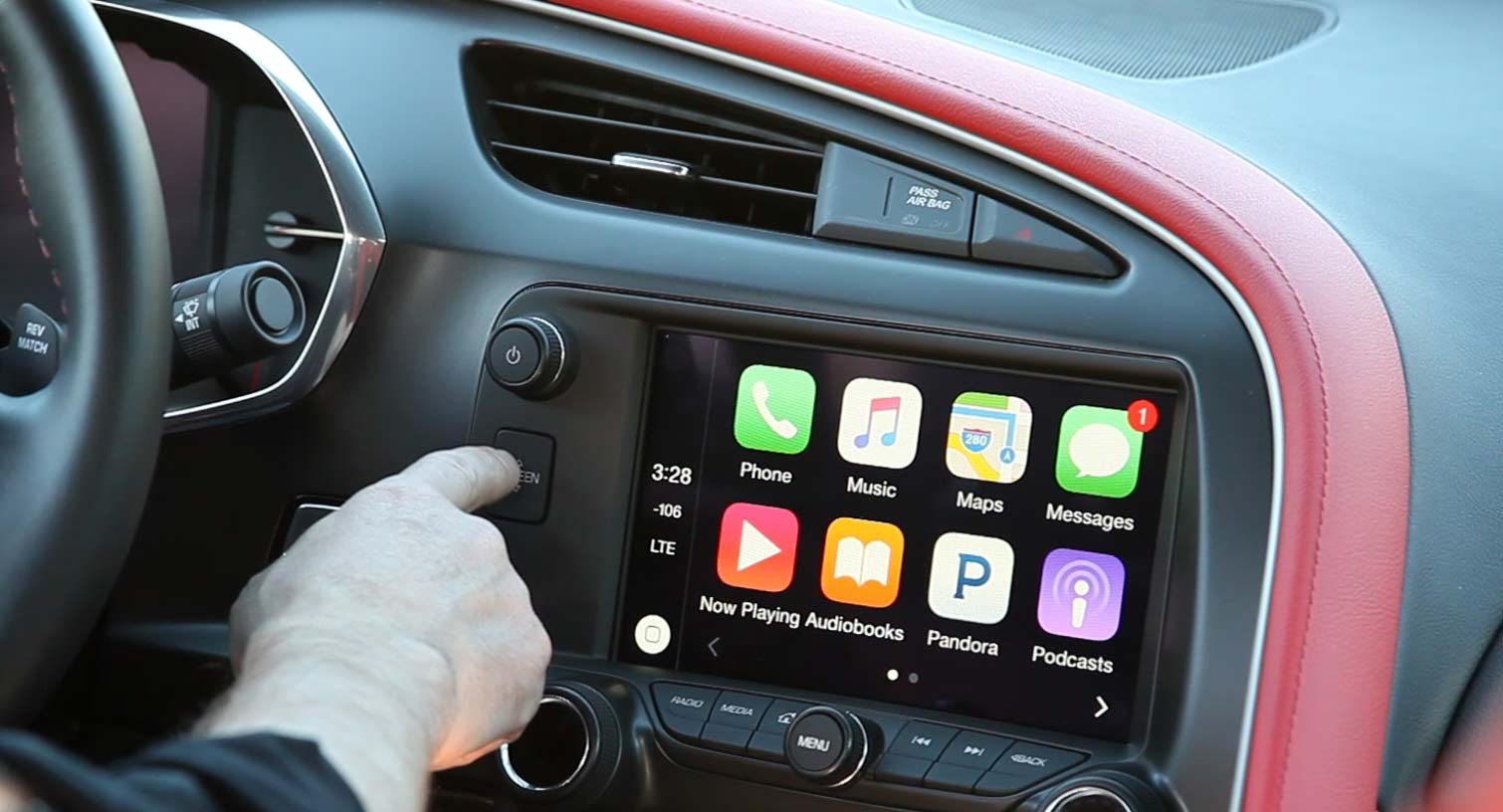
Although it has a much more limited vocabulary than Siri, the Corvette's built-in voice recognition is quicker. I had no trouble using it to switch between radio stations or trigger the navigation system, and l appreciated that I didn't have to go through separate entries (address, street, city, state) to enter a destination. Just spit the whole address out at once, and the system will understand where you want to go. On the other hand, you can't use voice commands to adjust the AC as you can on other cars.
The Z06 also came with a premium Bose sound system. Its sonic character is not one of my favorites, but it presents a rounded sound that many listeners enjoy. The only problem is that, even in the Corvette's relatively laid-back tour driving mode, the Z06 is loud, so you'll have to crank up the stereo to make out talk radio stations over the engine din. A better compromise would be to offer a noise-cancellation option that could minimize engine noise during long road trips.
The Drive: Extraordinary Power
The Z06 is a loud and proud American that's not ashamed to set off car alarms or guzzle gas like it was oxygen. It doesn't have the manners of a Porsche 911, but it has more grip than a wide receiver covered in stickum. However, if you exceed its traction-control systems' limits (and you can), you'll suddenly find yourself going sideways through corners (not that anything like that happened to me).
Yes, this car will catapult you from 0 to 60 in supercar times of around 3 seconds. But to get there, it takes practice in the manual model. Lots of practice. There is a launch-control setting you get to by selecting Track mode and then selecting Performance Track Management on the traction/Stabilitrak dial. You put your foot down on the accelerator and then release the clutch gently. You have to be pointed in a straight line as well.
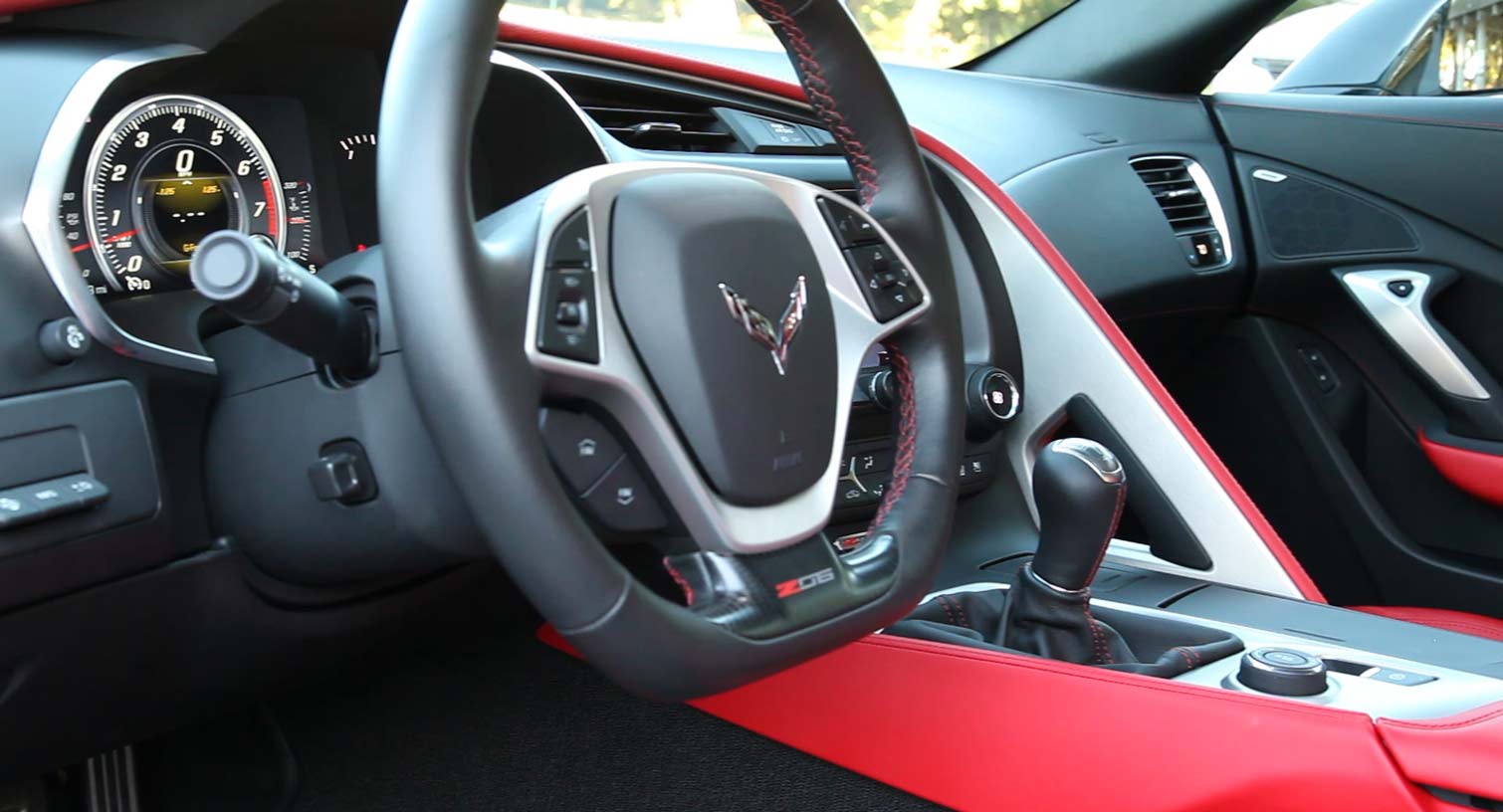
This particular driving mode is also intended to reduce any fishtailing when you're coming out of a corner, by limiting engine power upon exiting a turn. Those who want to ride the ragged edge can turn off (almost) all of the traction controls and slide around to their heart's content.
The Z06's steering response is immediate and concise. It was a pleasure to drive on winding country roads, and while in Sport or Track modes, you'll notice every bump in the pavement. Switching to the Corvette's Tour mode saves your backside so that you can go for hours comfortably. The only discordant notes occurred on deeply rutted highway grooves, where the Z06 tended to follow the indentations; it's a trade-off between steering sensitivity and stability.
The Z06 will catapult you from 0 to 60 in a supercar-like 3 seconds, but it takes practice. Lots of practice.
Many older-sports-car enthusiasts will love the seven-speed stick shift. I found shifting points to be smooth and natural. The car also includes cylinder deactivation, but don't expect to get much out of it; you have to be in Eco driving mode and cruising down the highway for it to kick in. Most people will leave the Z06 in Sport mode.
MORE: 2016 Cadillac ATS Coupe Review: Well Connected and Frisky
Short shrift is given to advanced driver assistance systems (ADAS) in the Corvette. It doesn't have lane keeping assist, emergency braking or pedestrian warning systems, for example. Given the low, curb-vulnerable front end, I did appreciate the Z06's forward bumper-level cameras, which eased my anxiety in street parking situations.
Bottom Line
In terms of price versus performance, the Corvette Z06 is an undeniable winner. There isn't anything else that comes close to this level of driving ability at this price. And in terms of connected car features, the Corvette is no slouch. The MyLink services are well laid out, there's crowd-pleasing Pandora support and Apple-device owners will be happy to find CarPlay in the dash.
Where the Vette isn't up to speed is in the active driver assist programs. But then again, people who want this kind of power would probably find alerts like lane departure warnings to be a distraction.
2016 Corvette Z06: The Vitals
Price as Tested: $87,140 MSRP
Engine and Drive train: 6.2-liter, supercharged, eight-cyclinder engine with seven-speed manual transmission and rear-wheel drive
Fuel Rating: 15 mpg city/22 mpg highway; 18 mpg combined
Connected Car System: Chevrolet MyLink 8-inch touch screen
Safety Technologies: Active handling and stability control, run flat tires
Driver Assist Technologies: Rear view camera, front curb-view cameras
Installed Options: Head-up display (standard), Bose sound system, Performance Data and Video Recorder with Navigation
John R. Quain has been reviewing and testing video and audio equipment for more than 20 years. For Tom's Guide, he has reviewed televisions, HDTV antennas, electric bikes, electric cars, as well as other outdoor equipment. He is currently a contributor to The New York Times and the CBS News television program.
